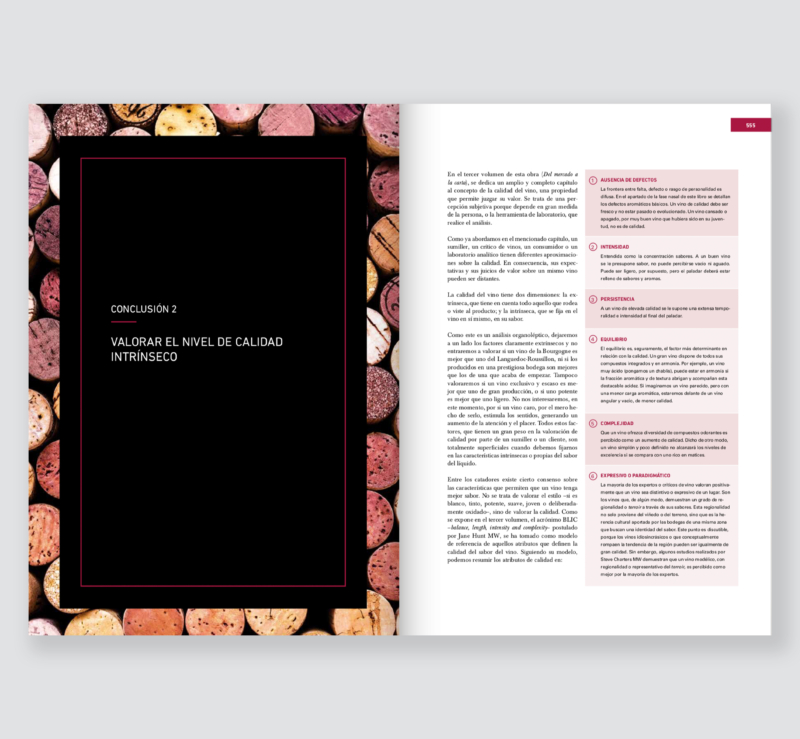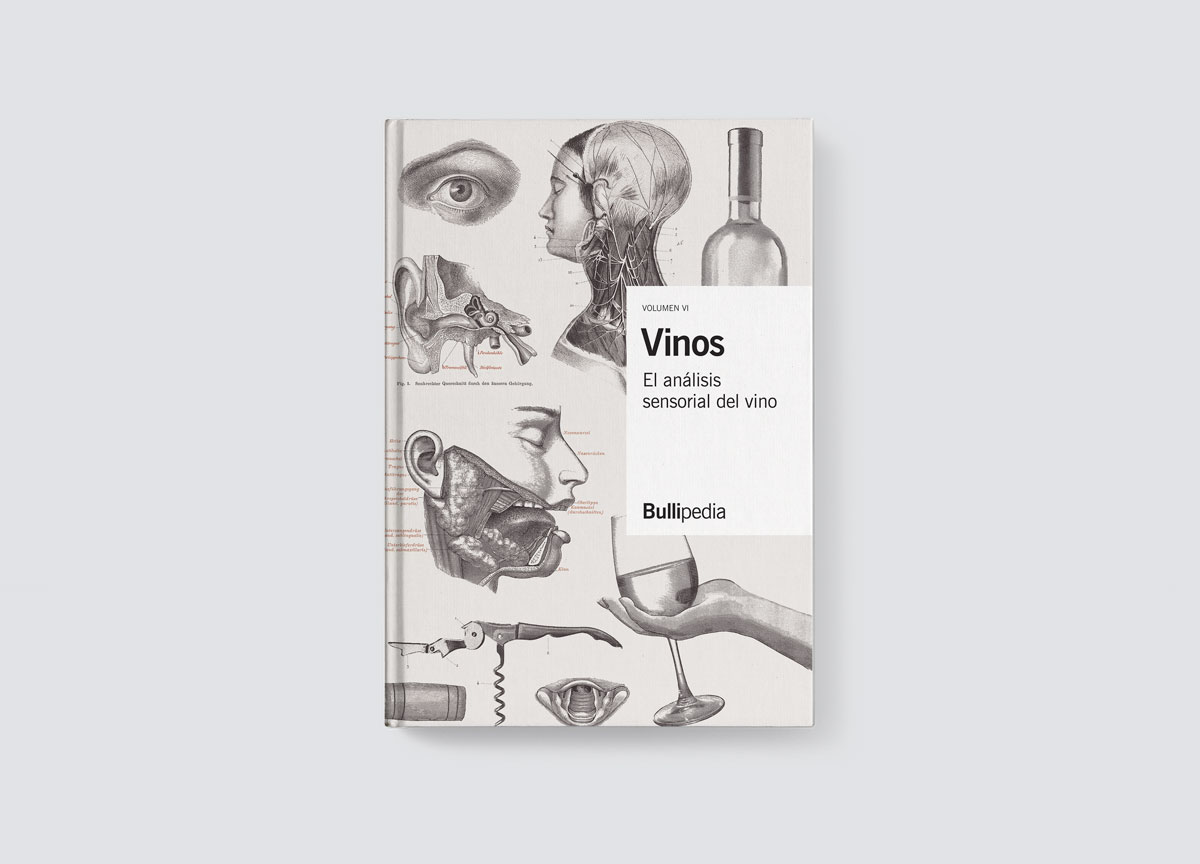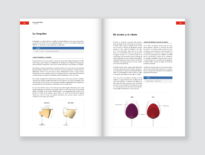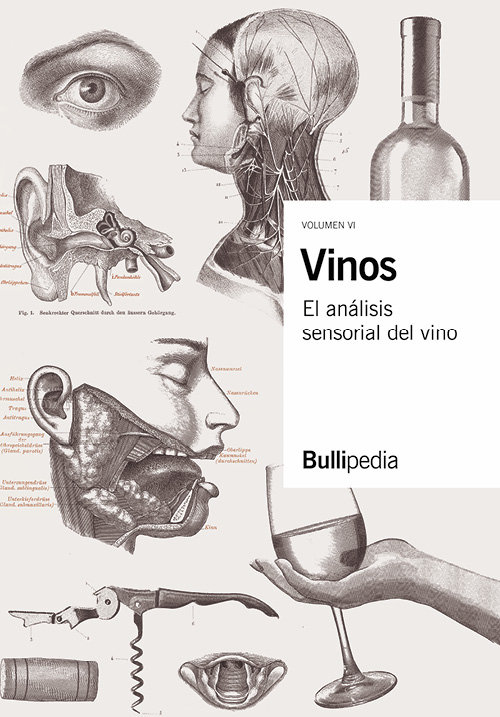Vinos. El análisis sensorial del vino (Volumen VI)
Wines. The sensory analysis of wine (Volume VI)
Volume VI of Wine Sapiens aims to rethink and deepen our knowledge of the organoleptic analysis of wine. This volume focuses on how our senses function through hearing, vision, olfaction, taste, the body’s motor system, and the complex somatosensory system, and thereby guides us on how they are used during the technical tasting of wine.
This volume is a companion to Volume V, overall totalling approximately 1,000 pages, to create the necessary content to comprehend the technical tasting of wine.
614 pages long
230 x 330 mm
Hard cover
ISBN: 978-84-09-43269-1
COMPLETE THE WINE SERIES...

Volume VI of Wine Sapiens aims to rethink and deepen our knowledge of the organoleptic analysis of wine. To do this, we examine the anatomy of the senses and the physiological functioning of perception, whilst incorporating Sapiens methodology to develop a tasting method through the visual, nasal, and oral phases, along with a concluding chapter to draw together our ideas. This is a work that focuses on the functioning of our senses through hearing, vision, olfaction, taste, the body’s motor system, and the complex somatosensory system, guiding us on how they are used during the technical tasting of wine.
Nine of the foremost wine tasters in the world accompany us throughout this work, just as they did in Volume V of Sapiens, Wines. The Act of Wine Tasting. Luis Gutiérrez, James Tidwell MS, Julia Harding MW and Thomas Matthews, among others, contribute through their enormous experience. This is a book detailing the anatomy and physiology of the senses, with an informative and straightforward approach. We delve into the functioning of the human body through the digestive, circulatory, neuroendocrine and nervous systems. Moreover, we focus on the values, capabilities and attitudes that every good wine taster should possess.
One of the most innovative sections of the book relates to the organisation of sensory perception. Although this may sound surprising, humans are considered to have more than five senses. In fact, if we take into account the polyhedral perspective of Dr Josep de Haro, one of the curators of this work, humans may have up to 16 senses. Sensory perception interacts with other cognitive processes, due to the fact that we give thought to what we drink, placing our attention on the glass, recalling flavours and expressing through language – whether technical, poetic, narrative or oenological – our perceptions of the event. All of these functions take place and interact within the brain.
We incorporate concepts such as cross-modality, defined as how the perception of one sense affects all the other senses. As an illustration of this concept: do you know that if you drink a soda in a red glass, it will make you feel more satiated? This is just one example of the myriad of transferred perceptions we experience.
As we have mentioned, the senses and their function are the focus of this work. What role does hearing play in the perception of wine? What muscles are activated to bring wine to our lips? What compounds within the wine give it its colour? What mechanisms govern the volatility of odour compounds so that they are released and reach our noses? How many tastes are we able to perceive? We suggest that there are more than 5. How are the senses of touch integrated, and the equilibrium generated within oral perception?
In short, we offer an innovative, scientific approach to understand the journey that starts in the sensory receptor and is carried through a nerve signal that transports sensation to the brain, reaching areas of the cortex that are activated to form perception. At the same time, we apply the Sapiens Method to develop an innovative tasting methodology. This results in a conclusion phase for the wine, in which the taster applies all his knowledge.
In this section is a short summary of each chapter of the book
Download in PDF
CHAPTER 1
THE WINE TASTER AS A HUMAN BEING: THE BODY, MIND AND SPIRIT
Continue reading >

CHAPTER 2
THE PERSONALITY AND PROFESSIONAL CULTURE OF THE WINE TASTER
Continue reading >

CHAPTER 3
THE SENSES, THE COGNITIVE PROCESS OF SENSORY PERCEPTION
Continue reading >

CHAPTER 4
OTHER COGNITIVE PROCESSES OF WINE TASTING. LANGUAGE, ATTENTION, MEMORY, INTELLIGENCE AND THOUGHT
Continue reading >

CHAPTER 5
HOW HEARING WORKS. WAVES OF VIBRATION THAT REACH THE EAR
Continue reading >

CHAPTER 6
HOW THE MOTOR SYSTEM WORKS. PLACING THE WINE IN ONE’S MOUTH FOR DRINKING
Continue reading >

CHAPTER 7
HOW VISION WORKS. DETECTING LIGHT AND TRANSFORMING IT INTO REALITY
Continue reading >

CHAPTER 8
WINE TASTING: THE VISUAL PHASE
Continue reading >

CHAPTER 9
HOW THE SENSE OF SMELL WORKS. VOLATILE COMPOUNDS THAT STIMULATE OUR OLFACTORY RECEPTORS
Continue reading >

CHAPTER 10
WINE TASTING: THE NASAL PHASE
Continue reading >

CHAPTER 11
HOW TASTE WORKS. RECEPTORS THAT DETECT DISSOLVED COMPOUNDS IN SALIVA
Continue reading >

CHAPTER 12
HOW THE SOMATOSENSORY SYSTEM WORKS. TOUCH, PAIN, BALANCE, KINESTHESIA AND CHEMICAL RECEPTORS
Continue reading >

CHAPTER 13
TASTING: THE ORAL PHASE
Continue reading >

CHAPTER 14
TASTING: CONCLUSION
Continue reading >































